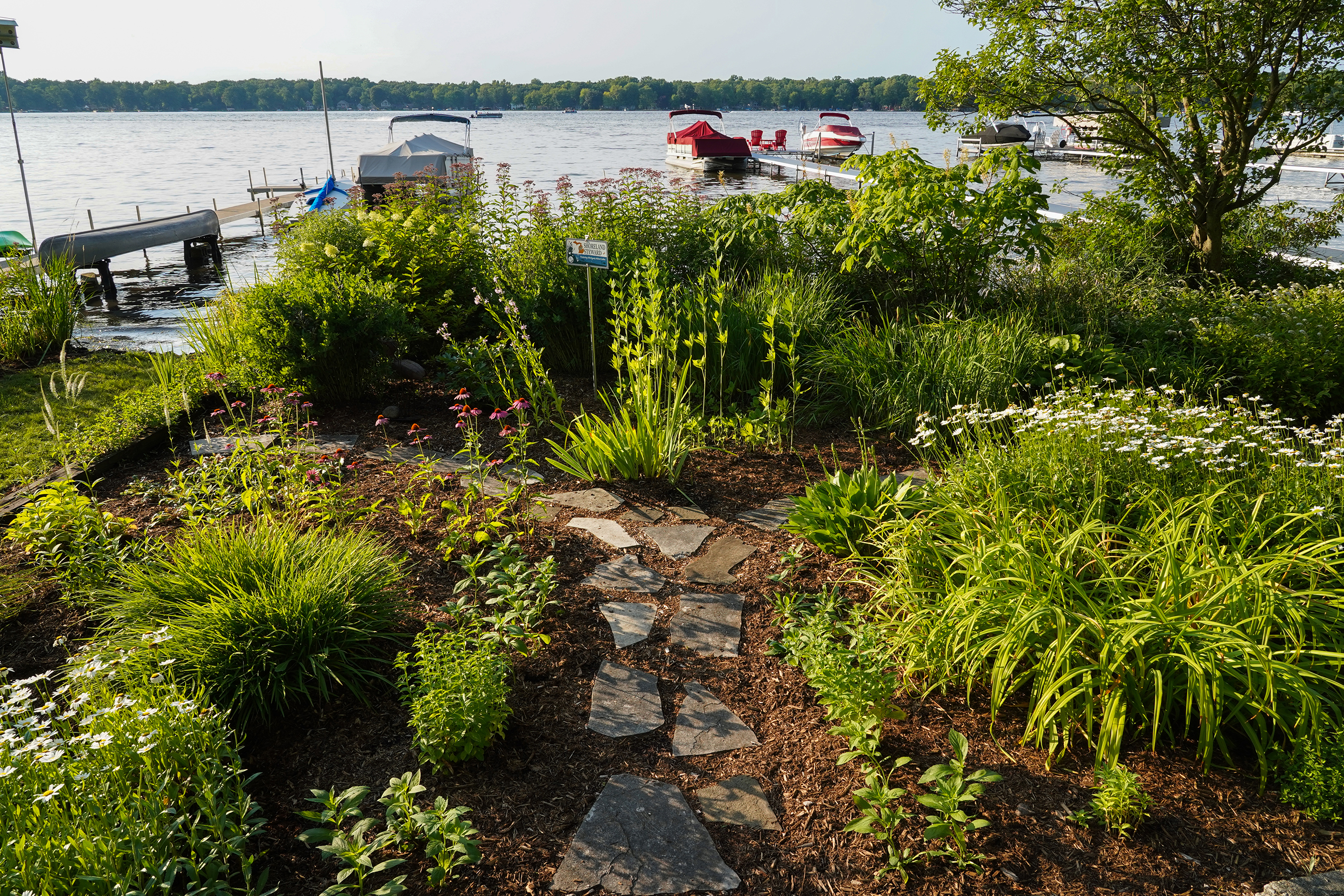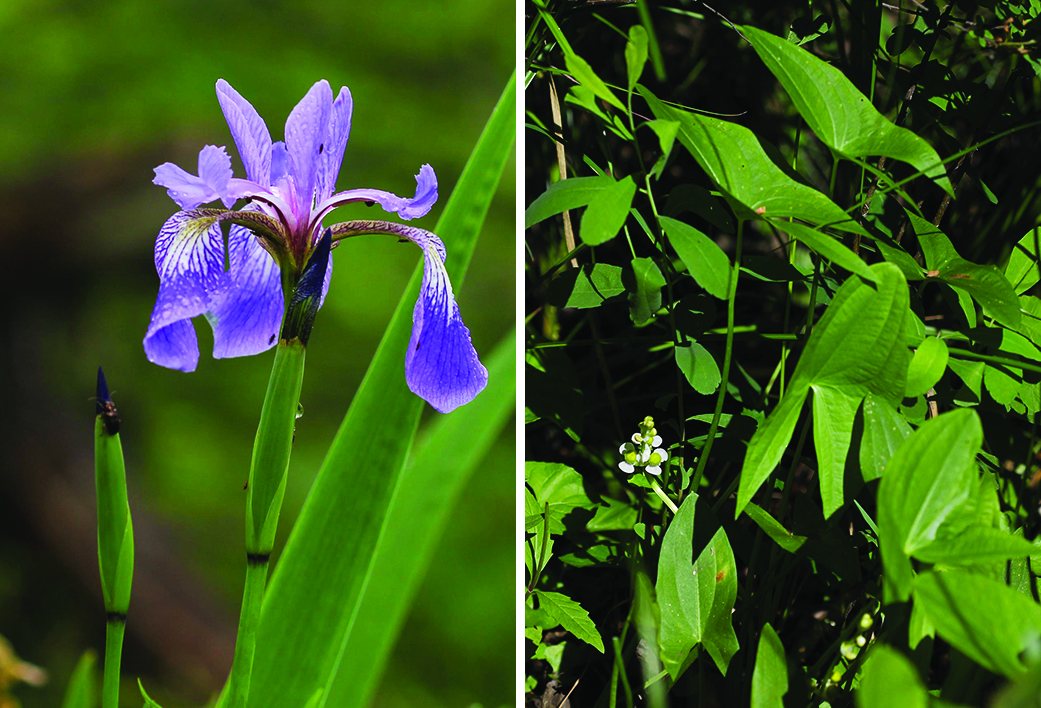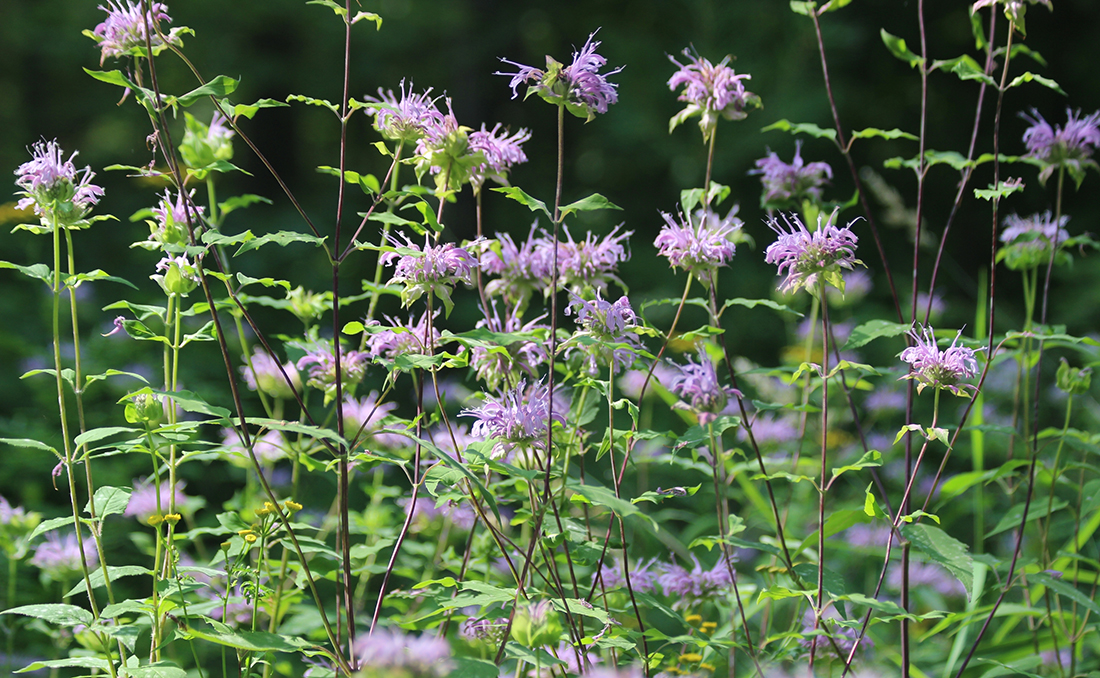
Smart Shorelands: Waterfront Plants to Enhance Your Shoreline
DOWNLOADJanuary 3, 2024 - Erick Elgin
Living near water offers moments of serenity and beauty inspired by all aspects of the water’s edge. Imagine enjoying the dappled sunlight of a lake shoreline with towering aromatic white pine trees above with delicious blueberries and sparse Pennsylvania sedge below. These plants together with the sounds and cool breeze from the lake can bring a breath of relaxation that Michigan lakes offer. But these plants do a whole lot more than just dazzle our senses. They also protect the water and land
Plants that grow in, along, and just outside water play an important role in protecting water quality and providing habitat for many water loving critters. This is especially true of native plant species. Native plants have extensive root systems that have adapted to living in and around water. The roots and stems minimize erosion and buffer the water from pollutants like phosphorus and nitrogen that may runoff yards. Importantly, they also provide necessary habitat for a variety of animals. For example, common arrowhead, a popular and beautiful shoreline plant, provides a high-energy food for migrating waterfowl and small fish may use big arrowhead beds as shelter.

Native plants along water:
- Hold soil in place with either deep or laterally extensive roots systems
- Absorb and lessen energy from waves created by wind and boats
- Slow down water runoff from sloping landscapes to allow pollutants and sediments to settle out or be absorbed
- Absorb nutrient runoff which helps keep the water clear of algae
- Provide key habitat for fish and wildlife
Planning your waterfront garden
When landscaping around water, it is important to balance your needs with the protection of the waterbody. A well-designed waterfront landscape will maintain access, views and aesthetics along with stabilizing soil, protecting water quality and enhancing habitat for fish and wildlife. When choosing native plants for your waterfront garden consider: (1) how high does it grow, (2) how much will it spread, and (3) when will it bloom.
It is also critical to plant trees, shrubs, flowers, grasses and sedges in areas where they will have the greatest success. There is often a gradual change in wetness along creek, lake, and pond shorelines. Typically, there is an aquatic zone that is almost always under water, a transition zone with consistently moist soil and an upland zone that is mostly dry. It is very important to plant the right species in the right location so that your plants survive.
Table 1 has a brief list of hardy species that do very well in each zone. When putting the right plant in the right place, you can better assure beautiful blooms and a hardy root mass that slows erosion.
| Table 1. Short list of native plants that have high success on shorelines and are commonly available in native plant nurseries. Species derived from Vanderbosch and Galatoxitch 2010. For a more extensive plant list, check out the Michigan Natural Shoreline Partnership’s website. | |
|---|---|
| Zone | Species |
| Aquatic |
|
| Transition |
|
| Upland |
|


Planting and maintaining a lawn along the water’s edge can be uninspiring and more importantly damaging to your lake or stream. The root system of lawn species are not deep or dense enough to protect the soil from the erosive nature of moving water. In addition, fertilizers and pesticides commonly used on lawns may enter the waterbody causing damage to fish and wildlife. Keep in mind, it is important to balance your needs with protecting the waterbody. Replacing lawn along your water’s edge with a native plant garden is a great way to accomplish this. Any addition of a native tree, flowering shrub, or a handful of wildflowers can make a difference. Already have some landscaping that isn’t native? No need to remove it, just incorporate native species when you can.
For more information on waterfront landscaping design and plant species best suited for each zone of a waterfront, check out the Michigan Natural Shoreline Partnership.
Additional resources
- Michigan Shoreland Stewards Program: mishorelandstewards.org/
- Michigan State University Native Plants and Ecosystem Services: nativeplants.msu.edu
- Wildflower Association of Michigan: wildflowersmich.org
- More Smart Gardening for Shoreland tip sheets: msu.edu/smart-shorelands
For more information on a wide variety of Smart Gardening topics, visit www.migarden.msu.edu or call MSU’s Lawn and Garden hotline at 1-888- 678-3464. Additional shoreland resources can be found on the MSU Extension Center for Lakes and Streams website at www.canr.msu.edu/cls.
Updated December 2023. This publication is supported in part by the Crop Protection and Pest Management Program 2017-70006-27175 from the USDA National Institute of Food and Agriculture. Any opinions, findings, conclusions, or recommendations expressed are those of the author(s) and do not necessarily reflect the view of the U.S. Department of Agriculture.



 Print
Print Email
Email





